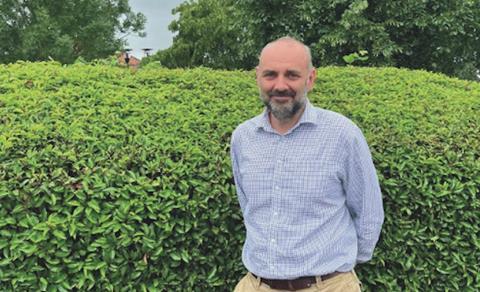HCP has had a strong year as it looks to become the one-stop shop for the whole of horticulture’s crop protection needs post-AHDB

A spirit of focused industry reigns at Horticulture Crop Protection Ltd (HCP), the organisation set up in the turbulent wake of AHDB Horticulture’s closure.
Now approaching the end of its first financial year, its small team is handling EAMUs (Extension of Authorisation for Minor Use) for crop protection products used by 32 crop associations. And it is in discussions with several more. Meanwhile, initial industry support for its existence stands firm as grower groups set up payment mechanisms and their voluntary subscriptions start to flow into HCP coffers.
“The process is going well,” says HCP’s part-time chief executive Simon Conway, who took over from caretaker CEO Jack Ward last June. “The monies are in-bound and we are talking to other crop associations that weren’t part of the original plan, such as GB Wine and the seed potato sector. We have also taken on minor premium arable crops, like linseed and borage. And we anticipate that other niche sectors may seek solutions from us for their plant protection products. We can hopefully become the one-stop-shop for all of horticulture’s crop protection needs.”
Despite its expanding portfolio, the original HCP team of four AHDB scientists – Kim Parker, Joanna McTigue, Carlos Duarte and Grace Emeny (currently on maternity leave and being covered by Sandra Hey), together with co-ordinator Lindsey Daniel – manage the EAMU process and co-ordinate emergency approval applications.
“This team has historically done 80 per cent of all applications for minor crops in UK, and that’s about the level we are doing now – broadly about 80 approvals a year,” explains Conway. “The team are working pretty fast and hard to get that done. It’s quite a thing really that the whole of UK horticulture is relying on these four individuals.”
He stresses how lucky the industry is to have such skilled individuals, whose expertise is fairly unique. “Anyone can make an application to the CRD [Chemicals Regulations Directorate], but it’s not easy, and it is becoming more complex,” says Conway.
HCP operates at the intersection of crop associations, the CRD, and the agri-chemical companies, and is in constant dialogue with all three entities, he explains. “I don’t see how the UK horticulture sector would function without us. It would come down to individual companies making applications [for individual crop protection products] and it would be a much slower process.”
With a shrinking armoury of chemicals available for crop use, UK growers are in desperate need of replacement products. Indeed, in the second week of January alone, two more actives were dropped from the Health and Safety Executive (HSE) renewal list. Yet, biological alternatives are just not appearing fast enough, in Conway’s view.
“We are losing chemicals and, in reality, I think all of us [in the industry] want to move towards biologicals,” says Conway. “At HCP, we are getting EAMUs on biologicals and we need to accelerate that. But if you speak to the ag-chem companies, they complain that obtaining on-label approvals from the HSE, which we don’t get involved with, is a very slow and uncertain process.
“If biologicals are the direction of travel, we need the CRD to move faster to get on-label approval so that my team can say: ‘There’s a biological active approved for wheat, so let’s hang an EAMU on it and use that for carrots and broccoli.’ We are only as good as the on-label approvals that are coming into the system, and they are seemingly slow.”
A crucial obstacle to this process is a delay to Defra’s National Action Plan (NAP) for UK pesticide use, expected for release imminently, Conway explains. “The NAP is vital because it will give guidance about the direction of travel for the UK in terms of where it is going with chemical pesticide use. Is the UK government going to introduce a target of, say, a 50 per cent reduction? Will its priority be moving to biologicals and really encouraging their uptake?” he asks.
“There are some very innovative products out there, so it is about enabling that. Because, ultimately, we want to move away from synthetic chemistry to more natural products.”
Looking ahead, Conway says there is more than enough going on to keep his team busy, without considering expanding HCP’s remit any time soon.
“For one, we don’t have the capacity. For another thing, the associations want to see us doing what it says on the tin and deliver value for money,” he says.
“I am very conscious that there was a ‘no’ vote for the AHDB horticulture levy. A lot of that was due to a lack of transparency. The beauty of this [HCP] model is it is so transparent. The associations have complete control of every penny they spend. And I think for the next couple of years we have got to remain very focused on the day job of delivering to our associations what they need.
“It has been great to have the support and positivity that all the crop associations have given us,” Conway continues. “We are on uncharted waters here. There was no certainty that the associations were going to buy into it, and the only reason we can carry on is by having that continued support – for which I am hugely grateful.” fpj



